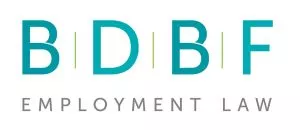From 6 April 2020 a new law, known as "Jack's Law", was introduced which gives parents the right to take 2 weeks' bereavement leave following the death of a child. In this article, we take a closer look at the new right and the steps employers need to take.
Why has parental bereavement leave been introduced?
Jack's Law was introduced in memory of Jack Herd, who tragically drowned in 2010, aged 23 months. It is the result of a campaign led by his mother, Lucy, to give bereaved parents a guaranteed right to a period of leave following the death of their child.
Prior to 6 April 2020, UK employees did not have a specific statutory right to take time off following the death of a child. Whilst employees had a right to take a reasonable amount of time off work to take "action which is necessary... as a consequence of the death of a dependant", there was no statutory right to be paid during this time. Further, the caselaw in this area made it clear that the purpose of dependant's leave in this context was to deal with practical matters, such as arranging a funeral, not to grieve.
Whilst some employers went further and allowed employees to take a period of compassionate leave following a bereavement, this was a matter of discretion for the employer. Beyond this, if an employee wished to take time off work to grieve following the death of a child, they would have to take either sick leave, annual leave or agree a period of unpaid leave with their employer.
The new right to take parental bereavement leave (PBL) and, in some circumstances, receive statutory parental bereavement pay (SPBP), was introduced on 6 April 2020 and is set out in the Parental Bereavement (Leave and Pay) Act 2018 and the Parental Bereavement Leave Regulations 2020. The Government has also published brief guidance on the new right. PBL does not affect a bereaved employee's right to take any other relevant forms of leave, such as dependant's leave or sick leave.
Who is eligible to take PBL?
Employed parents who lose a child aged under 18, including through a stillbirth after 24 weeks, are entitled to take up to 2 weeks' PBL. The right to take PBL is only available to employees, not to other workers, self-employed contractors or agency workers (unless they are employees of the employment business). It is a Day 1 right, meaning employees do not need to have a specified period of service with their employer to be eligible to take PBL (although there is a length of service requirement in relation to pay, see below).
Whether an employee is a "bereaved parent" within the meaning of the legislation is determined with reference to their relationship to the deceased child. It is a wide-ranging definition and covers the following categories of parent:
- a child's natural or adoptive parent, including employees who have become parents following surrogacy or other forms of IVF treatment;
- the natural parent of a child that has been adopted, where there is a court order authorising the child to have contact with the natural parent;
- an individual with whom the child has been placed for adoption by a British adoption agency, or under a fostering for adoption scheme, provided the placement has not been terminated;
- in circumstances where a child has entered Great Britain from overseas for the purposes of adoption, a person living with that child and who intends to adopt them and has received official notification from the British authorities that they are eligible to adopt;
- an intended parent under a surrogacy arrangement where it was expected that the court would make a parental order under the Human Fertilisation and Embryology Act 2008;
- a "parent in fact", being someone in whose home the child was living and who had day-to-day responsibility for the child's care for at least the 4 weeks prior to death, provided that the child's parent or someone with parental responsibility was not also living in the home; and
- the partner of any of the above, being a person living in an enduring family relationship with another person and their child, and who is not that person's parent (including adoptive parents), grandparent, sibling (including a half-sibling), aunt or uncle (including half-aunts and uncles). The purpose of this category is to include stepparents.
How do employees take PBL?
The leave can be taken as a single 2-week block or as separate 1-week blocks and can be taken any time up to 56 weeks after the date of the child's death or stillbirth. The reason for the 56-week period is to allow parents to take their second week of leave over the first anniversary of the death if they wish. In circumstances where more than one child has died, or been stillborn after 24 weeks, a parent can take a separate period of leave for each child.
In order to take PBL, an employee needs to notify their employer of:
- the date of their child's death or stillbirth;
- the date on which they intend their PBL to start; and
- whether they intend to take 1 or 2 weeks' leave.
Whilst the legislation does not require this notice to be given in writing, it would be sensible for employers to ask for notice to be given in writing so that there is a record. The employee does not need to provide evidence of the death or stillbirth.
How much notice the employee is required to give depends on when they would like PBL to start. If the employee intends to take PBL within the 8 weeks following their child's death, then they only need to notify their employer before the first day of leave. If, however, they wish to take PBL after the first 8 weeks (but before the end of the 56-week period) then they need to provide 7 days' notice. The legislation allows an employee to change the dates of their PBL by giving the same period of notice. However, once a period of PBL has started, it cannot be cancelled.
Who is eligible to be paid SPBP?
Unlike the right to take PBL, the statutory right for a bereaved parent (as defined above) to be paid during this time is not a Day 1 employment right. Instead, the employee must have:
- been in the employer's employment for a continuous period of at least 26 weeks, ending with the week prior to the week in which the child died or was stillborn;
- remained in that employment until at least the date on which the child died or was stillborn; and
- received normal weekly earnings in the 8 weeks before the relevant week that was not less than the lower earnings limit in force at the end of the relevant week. For the 2020/2021 tax year, the lower earnings limit is £120 per week.
If an employee has more than one employer then they can claim SPBP from each employer, provided they meet the eligibility criteria in respect of each employer.
How do employees claim SPBP?
In order to claim SPBP an employee must notify their employer that they are eligible and intend to claim SPBP. This should be done either before the start of their SBL period, or no later than 28 days after the first day of leave.
The employee's notice must contain the following information:
- their name;
- the date of death of the child; and
- a declaration that they satisfy the definition of bereaved parent.
How much will eligible employees be paid?
The rate of SPBP is the same as statutory maternity, paternity, adoption and shared parental leave. This is the lower of either 90% of the employee's basic salary or the prescribed rate (which for the 2020/2021 tax year is £151.20 per week).
SPBP is not payable for any week in which the employee is entitled to receive statutory sick pay or does any work for the employer (or another employer where they do not meet the eligibility criteria for SPBP).
Employers are able to recover SPBP from HMRC at a rate of either 103% or 92% depending on the size of the organisation.
Protections for employees during PBL
An employee taking a period of PBL is entitled to benefit from the same protections as employees taking other forms of family leave. In summary:
- their terms and conditions of employment (excluding those relating to remuneration) remain in full force and effect, meaning, for example, that they will continue to accrue holiday;
- in most cases they have the right to return to the same job that they held prior to taking a period of PBL;
- any dismissal because they took, sought to take, or the employer believed that they were likely to take, a period of PBL will be automatically unfair; and
- it will be unlawful to subject the employee to any other form of detriment because they took, sought to take, or the employer believed that they were likely to take, a period of PBL
Practical tips for employers
PBL is a new type of leave, operating in a completely different set of circumstances to other forms of family leave. It's important for employers to recognise this in communications with employees following the death of a child.
We recommend that employers put in place a parental bereavement leave and pay policy which sets out the scope of the right and the steps the employee needs to take in order to exercise it. However, we also recommend allowing a degree of flexibility to employees, for example, allowing them to make the notification of their intention to take leave by way of text message if that is more convenient.
Employers who offer enhanced benefits packages could consider enhancing the statutory regime in the following ways:
- enabling PBL to be taken following the death of a child of any age, not just for those aged under 18;
- allowing employees to take more than two weeks leave;
- granting an additional day's leave each year on the anniversary of a child's death; and/or
- topping up SPBP so that the employee receives full pay during this period.
On an employee's return to work the employer should speak to them and discuss whether there are any adjustments that could be made to their role and working practices (on a temporary or permanent basis). When doing so, the employer should remember that every situation is different and that they should discuss with each employee what would be helpful for them and not impose any changes without discussion. The important point to remember is to keep lines of communication open and to treat employees with compassion.
The content of this article is intended to provide a general guide to the subject matter. Specialist advice should be sought about your specific circumstances.


